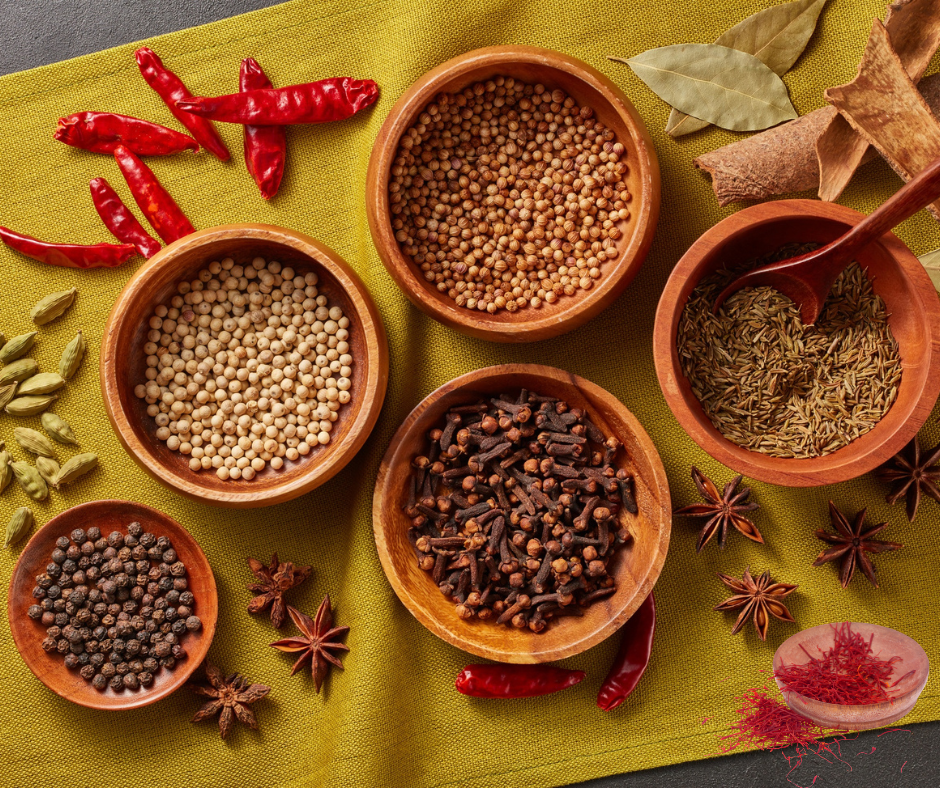Spices have been a cornerstone of culinary traditions for centuries, transforming simple dishes into flavorful masterpieces. Beyond their use in the kitchen, spices have played a pivotal role in history, driving trade, wars, and cultural exchange. While some spices are easily accessible, others come with a hefty price tag due to their rarity, labor-intensive harvesting processes, or unique qualities. Among these, Kashmiri saffron stands out as a true gem.
In this blog, we’ll uncover the top 10 most expensive spices in the world, diving into what makes them so valuable and the stories behind their price tags.
1. Kashmiri Saffron (The Golden Spice)
Kashmiri saffron, often referred to as “red gold,” is the world’s most expensive spice. Harvested from the stigmas of the Crocus sativus flower, this saffron is prized for its vibrant red color, distinct aroma, and unmatched flavor. Grown in the lush valleys of Kashmir, the saffron flowers bloom only for a few weeks each year.
The harvesting process is labor-intensive: each flower must be handpicked before dawn, and it takes nearly 75,000 flowers to produce just one pound of saffron. This spice is not only a culinary treasure but also a key ingredient in traditional medicine, skincare, and religious rituals. The authenticity and quality of Kashmiri saffron set it apart from other varieties, making it a luxurious choice for chefs and connoisseurs worldwide.
2. Vanilla
Vanilla, derived from the pods of Vanilla planifolia, is the second most expensive spice due to its labor-intensive cultivation process. Native to Mexico, this fragrant spice requires hand pollination, a meticulous process that contributes to its high cost. The finest vanilla beans come from Madagascar, renowned for their rich, creamy flavor profile.
3. Mānuka Honey
Although technically not a spice, Mānuka honey is worth mentioning due to its culinary and medicinal value. Produced in New Zealand, this honey is derived from the nectar of the Mānuka tree. Its antibacterial properties, unique flavor, and limited availability make it a coveted addition to kitchens and health regimes.
4. Fennel Pollen
Often referred to as the “spice of angels,” fennel pollen is a rare spice collected from wild fennel flowers. It has a sweet, earthy flavor with hints of licorice and citrus. Its rarity and labor-intensive harvesting process make fennel pollen a luxury item in gourmet cooking.
5. Cinnamon (Ceylon)
Ceylon cinnamon, also known as “true cinnamon,” comes from the inner bark of the Cinnamomum verum tree. Native to Sri Lanka, this cinnamon is milder and sweeter compared to the commonly used cassia cinnamon. Its laborious harvesting process and superior quality make it one of the most expensive spices in the world.
6. Cardamom
Known as the “Queen of Spices,” cardamom is cherished for its aromatic, sweet, and spicy flavor. Grown predominantly in India and Guatemala, this spice is harvested by hand, making the process labor-intensive and costly. It’s a staple in both sweet and savory dishes across various cuisines.
7. Clove
Cloves, the dried flower buds of the Syzygium aromaticum tree, have a strong, pungent aroma and a warm, sweet flavor. Native to Indonesia, cloves are used extensively in cooking, traditional medicine, and perfumery. Their price is influenced by high demand and a meticulous harvesting process.
8. Saffron from Iran (Persian Saffron)
While Kashmiri saffron is the most sought-after, Persian saffron is a close competitor in quality and price. Grown in Iran, this saffron variety shares similar characteristics but is more widely available, making it slightly less expensive than its Kashmiri counterpart.
9. Grains of Paradise
This rare spice, native to West Africa, is a member of the ginger family and has a peppery, citrusy flavor. Grains of paradise are often used as a substitute for black pepper and are gaining popularity in gourmet kitchens worldwide.
10. Star Anise
Star anise, a star-shaped spice from the fruit of the Illicium verum tree, is valued for its strong licorice flavor. Widely used in Asian and Middle Eastern cuisines, star anise is also a key ingredient in traditional medicine and spice blends like Chinese five-spice powder.
Why Are These Spices So Expensive?
Several factors contribute to the high prices of these spices:
- Rarity: Many of these spices are grown in limited regions, making them scarce.
- Labor-Intensive Harvesting: Hand-picking and processing add to the cost.
- High Demand: Their unique flavors and health benefits drive demand, pushing prices higher.
- Climate Dependency: Specific climatic conditions are essential for cultivating these spices, adding to their exclusivity.
Conclusion
Spices are more than just ingredients—they are cultural treasures that tell stories of tradition, hard work, and nature’s bounty. Kashmiri saffron, the crown jewel of spices, exemplifies the artistry and dedication required to produce such a luxury.
At Saffron Cottage, we celebrate the richness and history of spices, offering the finest quality Kashmiri saffron to elevate your culinary creations. Whether you’re a professional chef or a home cook, our saffron promises to bring unparalleled flavor and aroma to your dishes.
Ready to experience the magic of Kashmiri saffron? Visit Saffron Cottage today and indulge in the world’s most exquisite spice.
